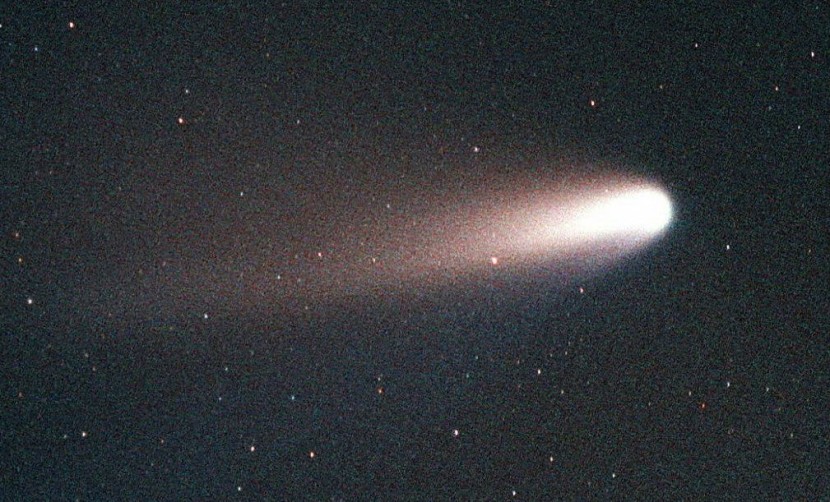
NASA's Hubble Space Telescope has captured an image of the biggest comet ever spotted by humans and is hurtling through space at blazing speeds, but when will it get closer to our planet or the Sun?
The space telescope has determined that the size of the cosmic object gives a diameter that is roughly 80 miles across, which makes it larger than the state of Rhode Island. Furthermore, the nucleus is almost 50 times larger than the one found at the heart of the most known comets.
Largest Comet Ever Seen
The mass of the comet is approximately 500 trillion tons, which is a hundred thousand times more than the mass of a typical comet that is found closer to our Sun. Astronomers have named the behemoth comet C/2014 UN271 (Bernardinelli-Bernstein) which has a speed of 22,000 miles per hour while flying in space. It is currently found somewhere at the edge of our solar system but will never get closer than 1 billion miles from our star.
But for reference, the comet will be at its closest to our Sun and the Earth around the year 2031. Previously, the record holder for the largest nucleus of a comet was C/2002 VQ94 which was estimated to be 60 miles across, as per NASA.
Read Also: Colossal Ancient Impact on the Moon Explains How the Near, Far Side Differs From Each Other
The newly-discovered comet is roughly 20 miles wider than the previous record holder, which held the title for nearly 20 years. A professor of planetary science and astronomy at the University of California in Los Angeles, David Jewitt, said that the recently found comet is "literally the tip of the iceberg" for the thousands of other comets that are too faint to see located in the distant parts of our solar system.
He noted that experts have always suspected that this particular comet was extremely large because it was so bright even at great distances. With Hubble's recent image, astronomers have now confirmed their suspicions with Jewitt adding that the nucleus of C/2014 UN271 (Bernardinelli-Bernstein) was "blacker than coal."
According to Digital Trends, the two astronomers who spotted the record-breaking comet were Pedro Bernardinelli and Gary Bernstein. They discovered the cosmic object in archival images from the Dark Energy Survey at the Cerro Tololo Inter-American Observatory in Chile. After first being discovered in November 2010, experts have continued to study it using telescopes from both the Earth and in space.
Hubble Telescope's Discovery
Man-To Hui of the Macau University of Science and Technology, Taipa, Macau, is the lead author of the paper that studied the comet. He said that the newly-discovered cosmic object was very active despite being so far away from the Sun. He said that his team took five photographs of the comet on Jan. 8, 2022.
The challenge that astronomers faced with the comet was how to discriminate the solid nucleus from the huge dusty coma that was enveloping it. While it is still too far away for the Hubble telescope to visually resolve the nucleus, data showed a bright spike of light at the nucleus' location. This allowed Hui and his team to make a computer model of the surrounding coma and adjust it to fit the Hubble images. They were then able to determine the size of the comet's nucleus by subtracting the glow of the coma, SciTechDaily reported.
Related Article:
© 2025 HNGN, All rights reserved. Do not reproduce without permission.








